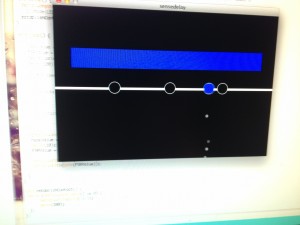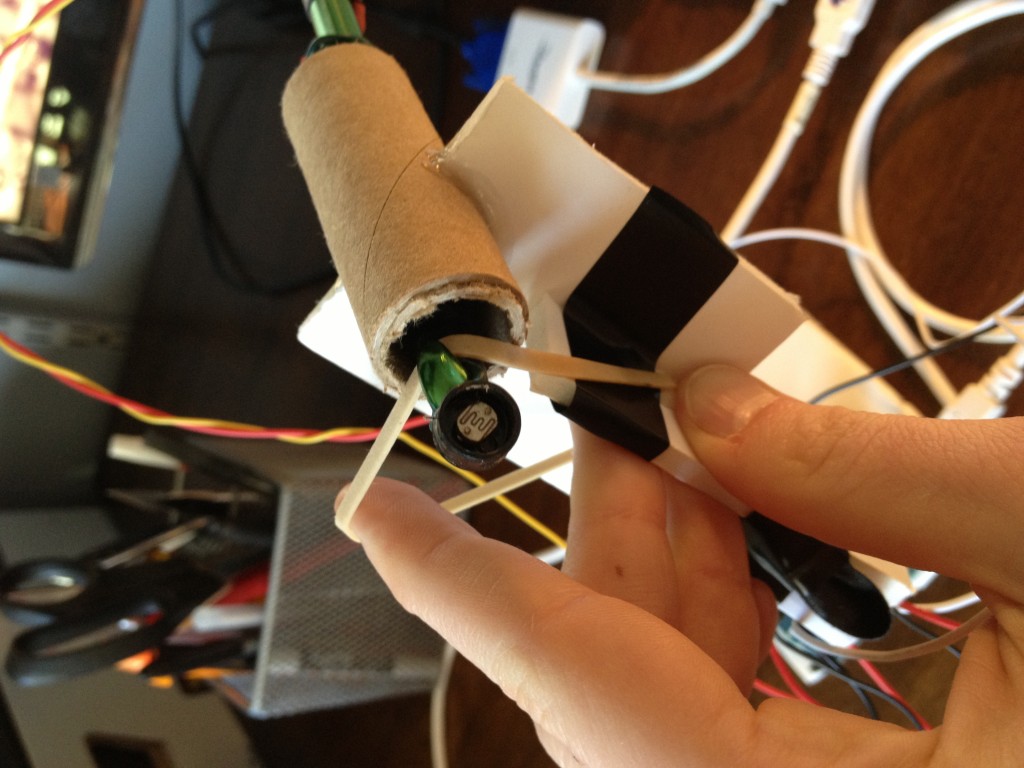Tempo and tension in handiwork
February 6th, 2013 By some bearsCrocheting is technically just a series of knots looped through previous knots in the yarn. It “builds up” through different sequences of actions. The actions include looping yarn around a hook, pushing the hook through existing loops, and pulling the hook through again. The process is mechanically simple. However, skill and practice is required to achieve an even series of knots with the right tension on the yarn. Too loose and the work shows unsightly holes. Too tight, and the fabric buckles, or worse, the needle does not easily slip through the loop on the next row.
The two hands work together to crochet. One hand maneuvers the hook and loops the yarn. The other hand holds the work and feeds the yarn to the hook that’s looping it. This hand holding the work is responsible for maintaining an even tension. It does so by pulling the work down while the hook in the other hand tries to pick up the work as it pulls the yarn through existing loops.
A crochet piece achieves visual complexity when stitches are made in different combinations. This requires the crocheter to count silently while they work and maintain an even tension. Some rows are repetitive and induce a meditative state. At this point, the count is internalized as movement. The crocheter actually feels the rhythm of the pattern as they carry out manual tasks with the needles and yarn. The actions result in a tempo that internalized to relieve the need to count for long periods of time.
To communicate this tacit feeling of this work, this intervention simulates a repetitive double crochet chain. A Processing application visualizes the ideal sequence of operations, the passage of time, and input from the sensors attached to the hook and the work.
The left hand holds the work. The work is a crocheted pouch with a force sensing resistor inside. The user grips the work firmly when pulling new yarn through existing loops. This additional force counters any pull from the hook and maintains even tension. Since the hand holding the work also feeds yarn to the hook, it should otherwise relax to prevent stitches from being worked too tight.
The hook has a photocell attached to its tip. The hook slips in and out of an semi-opaque tube. When the photocell registers a transition from lighter to darker environments, the stitch has “passed through” a loop and a new knot has been made. A double crochet consists of three knots in one loop. So, the user will repeats this for a total of three times before starting again.
Users should attempt to match their tension to the tension levels illustrated at different points on the action pattern. Likewise, knots registered by the photocell should be completed at the three specified times. As users’ actions converge on the pattern, they start to understand the feel of tempoed action. Crocheters maintain this tempo between tool and hands to sustain peace of mind and achieve an even tension for their material.
Practice holding the fabric with the correct tension. A photocell on the end of the crochet hook detects a “stitch” when it enters the dark tunnel. A force sensing resistor measures the grip of the hand holding the work.

When the circles align, it’s time to retract the hook into the tube and make a stitch.
